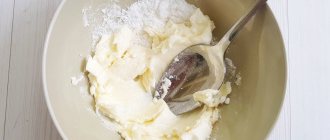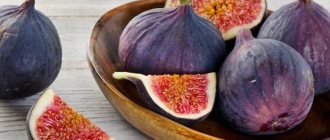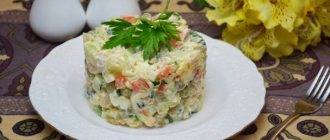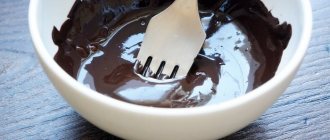One of the simplest, oldest and most suitable desserts for New Year's celebrations is one that most people rarely think about. Sabione (Zabaione or Zabaglione) is a very common holiday dish for the sweet table in Italy. Some call it cream, others call it sauce. But one thing remains the same, the classic sabayon is so delicious and invigorating that it will perfectly warm you up when you return home at the end of a cold winter day.
Story
The history of sabayon dates back several centuries. Like many ancient recipes, its trace is lost in the depths of centuries. Therefore, there are many legends about its origin.
One of them claims that the sabayon came from the hand of Giovan Paolo Baglioni in 1471. The captain set up camp near Reggio nell'Emilia. Not knowing what to feed his soldiers, he collected available supplies from local residents: eggs, sugar and wine. And, not having any culinary skills, he simply mixed all the ingredients and boiled it a little, like soup. This is how the sauce with the personal name Zvan Bajòun was born, which later turned into Zabajone.
The most ancient theory attributes Neapolitan origin to sabaion. A similar recipe appeared in a Naples manuscript in the mid-15th century (several decades before the intrepid captain entered Emilia).
Another version considers the father of the sabayon to be the Franciscan monk Pasquale de Baylon, who lived in the parish of St. Thomas in Turin (Torino). He discovered the sauce recipe at the end of the 16th century by accident, and then tried to bring it to perfection. As a result, the priest came to the ideal formula “1+2+2+1” (1 egg, 2 teaspoons of sugar, 2 shells of wine, 1 shell of hot water). Pasquale recommended preparing sabayon not only for children as a source of energy, but also for men to get the “Viagra” effect.
In 1680, Beilen was canonized. Since then, the recipe he invented began to bear his name San Baylon (Saint Baylen) or otherwise Zabaglione.
Among the most common versions, other assumptions are lost. Some believe that the recipe for sabaion was known to the Greeks, and its name comes from the Latin word sabaium (a type of yeast). Others claim that the dessert came from France with the name sabayon, despite the fact that the French word is of Italian origin. The third category of fighters for truth call the sauce Sicilian in origin. They suggest that its name comes from zabbina (whey foam), which in Sicily means “to beat while cooking,” which is how sabayon is made.
The countless versions of the birth of Sabayon do not end there. I attribute its invention to the Medici court, the influential Gonzaga family, and furious romantics find its roots in Venice. It’s up to you to decide which of the described theories is the most suitable for yourself when conjuring over dessert.
Historical recipe
The recipe for the sauce first appeared in the culinary manuscript of Cuoco Napoletano, which is still kept in a New York library. The book describes the preparation of the dessert as follows: “ To boil 4 cups of sabayon, take 12 yolks, 3 ounces of sugar, half an ounce of cinnamon and a cup of good sweet wine . Let the mixture simmer until it thickens like broth. Then remove from heat and pour into a large dish for fun company. If you'd like, put a piece of unsalted butter on top."
In later Italian cookbooks there are recommendations for consumption: “sabayon should be served at night before bed, it stimulates the brain well.” There are also dessert recipes supplemented with chicken broth, almond milk and rose water.
Sabayon: history and cooking secrets
Sabione is one of the most famous desserts in Italian cuisine. How to cook it?
Sabayon (Italian: zabaglione, zabaione; French: sabayon) is one of the most famous desserts in Italian cuisine. This is an egg-butter sauce with wine and sugar. In a broad sense, sabaione refers to various desserts prepared with the formation of foam with the addition of alcoholic beverages.
Sabayon is also popular in Argentina, where it is known as sambayón. In Colombia, the dessert is known as sabajón. In Venezuela, a similar dessert drink made with eggs is called ponche de crema.
The authorship of sabayon is attributed to the great Italian chef of the 16th century, Bartolomeo Scappi, as well as the court cook of Duke Charles Emmanuel I of Savoy. It is also believed that sabayon was invented in Piedmont, in the 16th century, in a monastery kitchen, where one day eggs and sugar were not beaten as fluffy as expected. Then the monks added sweet Cypriot wine to the mixture and got a new cream that tasted great.
Sabayon is based on whipped yolks with sugar, to which any strong wines are then added: Madeira, rum, etc., as well as spices: vanilla and cinnamon, depending on the wishes of the pastry chef and the nature of the wine. Sabayons prepared with chocolate (grated) and milk are possible. They must carefully observe a strict ratio between the parts, which gives a certain consistency to the entire dish and affects its taste.
Sabayon is often served with fruit. It is ideal served with puddings or muffins - fruit, vanilla, chocolate or coffee. In fact, any decent store-bought baked goods can easily be elevated with this homemade addition, turning them into a whole afternoon tea event!
There is also unsweetened sabayon. In this case, wine and yolks are whipped with fruit and vegetable juices, seasonings, aromatic herbs, freshly ground pepper and olive oil. You can add saffron and garlic powder to this. This option is good as a sauce for fish, vegetable dishes, seafood, fresh tomato and herb salads.
In addition, unsweetened sabayon is the best serving for young asparagus boiled in salted water. With other delicate crunchy vegetables, cauliflower, artichokes or rhubarb, sabayon will also be very useful.
Classic sabayon
Ingredients: 6 eggs, 1/2 tbsp sugar, 1/4 lemon, 1/2 tbsp table wine, 1/4 tbsp water.
Preparation instructions: Grind 6 yolks, 1/2 cup sugar, and zest of 1/4 lemon in an enamel saucepan. Put on fire and add 1/2 cup of table wine (1/4 cup of Madeira), and then 1/4 cup of boiled water with lemon juice.
While cooking, whisk the sauce constantly with a spatula until it thickens and turns into foam. Serve with puddings, cauliflower, artichokes and asparagus. Can be decorated with fruits, berries, chocolate, etc.
Make some orange sabayon!
Modern recipe
Times change, but the classic sabayon remains virtually unchanged . Over the years, the recipe has only been slightly refined to fit perfectly into the modern kitchen. To prepare sabayon for 4 people, you will need:
- 4 egg yolks;
- 3 tablespoons sugar;
- 1.5 teaspoons cinnamon;
- 150 ml sweet wine.
Kitchen utensils you will need: a mixer, a whisk, a thick-bottomed pan, a heat-resistant (glass, iron) bowl. If earlier dessert was served in a large dish from which everyone ate, now the cream is prepared in portions. Therefore, small cups, glasses or any molds are suitable for hardening sabayon.
How to cook
Combine egg yolks, sugar, cinnamon in a bowl and beat until the mixture turns white and increases in volume. Pour in the wine and beat a little more with a mixer.
Place the bowl in a water bath and keep for 7 minutes, while whisking. When the mass thickens, remove from heat and distribute into beautiful molds. Let the dessert cool to room temperature and refrigerate for 4 hours.
Recommendations
To get the perfect sabayon, consider a few recommendations:
- The most suitable wine for making sabayon would be Marsala or Tuscan wine Santo;
- If you are not impressed with cinnamon, then you can safely exclude it from the recipe completely or replace it with another spice;
- If you decide to cook the sabayon directly in the pan rather than in a water bath, be very careful. The heat should be kept minimal, otherwise the result will not be the famous dessert, but a lumpy liquid;
- While the sabayon cools to room temperature, it must be stirred regularly to avoid separation of the yolks and wine;
- Before storing the sauce in the refrigerator, wrap the molds in cling film. This will prevent the dessert from absorbing the smells of other dishes.
How to serve
Sabayon does not have to be served cold. You can send it to the table while still warm, or cool it to room temperature. To decorate the dessert, use biscuits, waffles or your favorite sweet pastries.
The ideal combination would be sabayon with fruit sauces or fresh fruit. You can add mint leaves for dessert, garnish with whipped cream, sprinkle with chocolate chips, lemon or orange zest.
The Italian sauce is so good that there is a version of the tiramisu recipe with sabayon. The amount of mascarpone in the cake is halved and eggs are omitted. To compensate for the changes, the cheese is mixed with pre-cooked sabayon.
Sabayon is very versatile in sweet flavor combinations, so your imagination is not limited in any way.
Lemon cream sabayon
To enhance the delicate aroma of the egg sauce, you can add lemon or lime zest.
Ingredients:
- yolks – 4 pcs.;
- sugar – 3 tbsp;
- wine – 150 ml;
- zest – 1/2 tsp.
Preparation:
- Place a pot of water on the gas until it boils.
- Wash the eggs, break and separate the yolks from the whites.
- Place the yolks in a bowl and, whisking with a whisk, add granulated sugar, lemon zest and dry wine.
- It is better to buy Italian wine, but choose dry or dessert wine - it depends on your taste.
- When the mixture becomes homogeneous and airy, place the bowl over a saucepan of boiling water, reduce the heat and continue whisking.
- When the consistency of the sauce becomes thick enough, pour the sabayon into bowls and cool.
- While the cream is cooling, stir it periodically so that the dessert does not separate.
- Place in the refrigerator for several hours.
- Cut a couple of slices of orange and separate the segments without skin and films.
LiveInternetLiveInternet
Quote message purple
Read in full In your quotation book or community!
I present to you the recipe for Sabayon cream. The Greatest Italian. It is described in recipes dating back to the 16th century. Several Italian regions (Lombardy, Sicily, Emilia and Piedmont) argue about where this dessert was first created. There are several versions of the origin of this cream.
One of them says that it was created completely by accident in 1500 in Reggio Emilia. When captain Emiliano Giovani Baglione arrived at the port with his ship, the locals provided him with grapes, eggs and wine to feed the crew. The sailors began to mix these products and this dessert was created. According to the second version, its creator was the Franciscan monk Pascual Baylon, who at the end of the 16th century prepared this cream as a means of strengthening a weakened body. In Europe, this dessert became famous after Catherine de Medici brought Italian chefs with her to France to the royal court. This sweet wine egg cream is a staple of Italian pastry making. The most famous of all Italian not only creams, but also desserts in general. Many cakes and pastries have been created based on it, and it is even sometimes added to tiramisu; but it is best on its own - in a cold glass, garnished with figs (a traditional addition), berries or flowers. Marsala, a strong Sicilian wine similar to Madeira, or Moscato d'Asti, a sparkling white wine originally from Asti, are most often added to sabayon. The composition of this light custard is very simple. But you need to be careful when preparing. Sabayon recipe Ingredients: 4 yolks 120 g sugar 100 ml Moscato di Asti (Marsala, Sherry, Porto, Madera) Preparation: In advance, place a saucepan with water on medium heat for a water bath. Beat the cold yolks well with the sugar until they turn white and foam. Little by little, carefully so that the foam does not disintegrate, add wine. Place the container with the yolks in a water bath and cook, whisking constantly. Attention! The cream should not boil! (The water underneath it, too, by the way.) As soon as it starts to thicken, remove from heat. Make sure that the structure of the cream is uniform. Pour the sabayon into glasses or molds, garnish with berries or flower petals (those flowers that are considered “edible”: violets, pansies, nasturtium, calendula, tea rose). It is served both hot and cold. In the summer, it is good to serve sabayon with apples. Mix it with whipped cream, pour the resulting cream over apple slices and sprinkle with sliced almonds. Apple slices can be lightly fried, then placed in a fireproof dish, filled with cream and lightly baked until browned (5-7 minutes). Ideally, under the grill (a couple of minutes). source purple
All about culinary art...
Before you make Sabayon sauce at home, you should read some interesting information. This name refers not only to one of the most famous Italian desserts in the world, but also to other sweets, the preparation of which involves whipping foam and adding alcoholic beverages. This dish is popular in Italy, Venezuela, Argentina, as well as France and Colombia.
At home, the cream is prepared from egg yolks, sugar, wine, cinnamon, and rum. The yolks and sugar, ground to a white foam, are placed in a water bath, mixed with the rest of the ingredients and whipped to a stable creamy mass. Traditional serving: with fresh figs or in a glass with biscuits.










